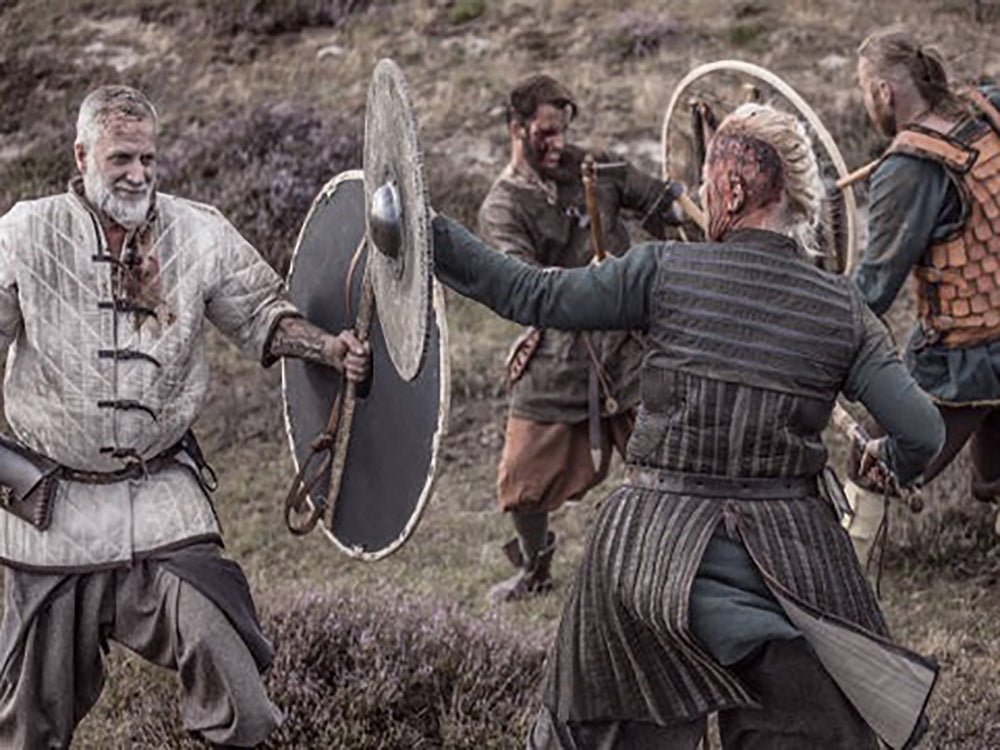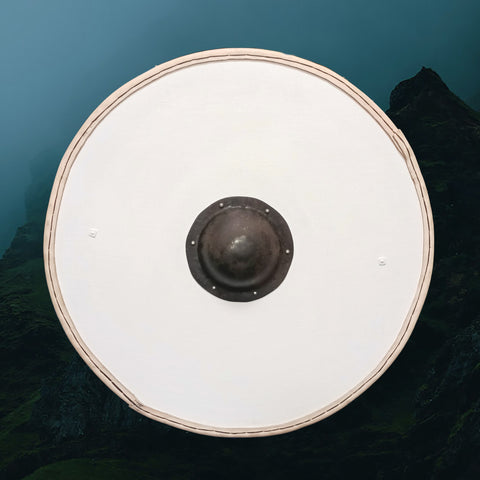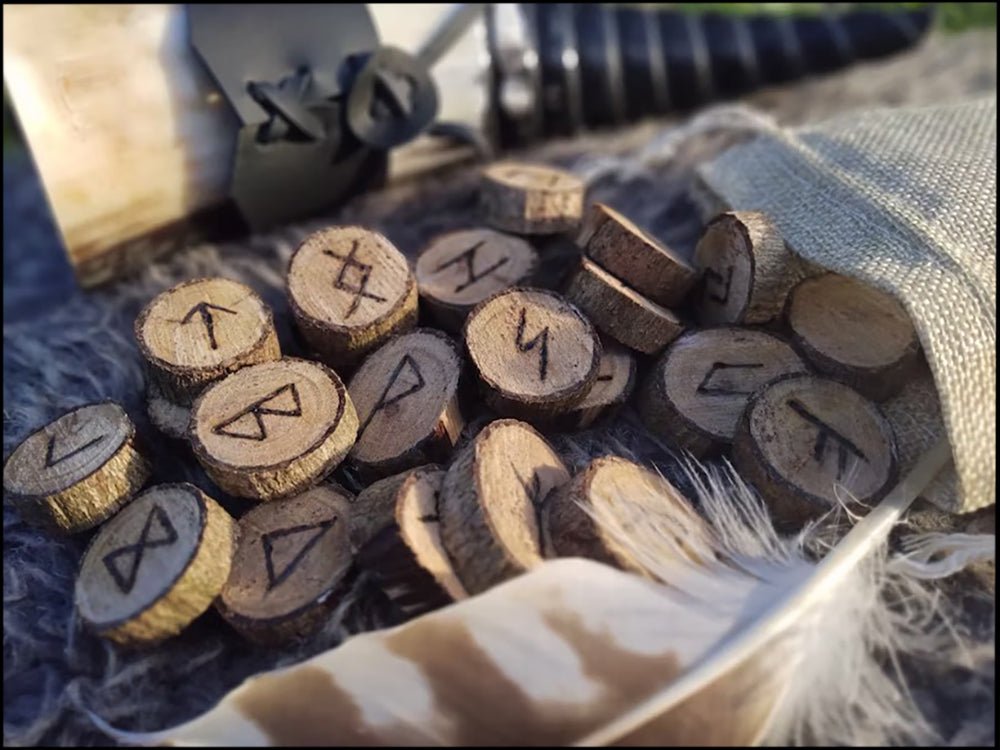The Vikings have gone down in history as some of Europe’s greatest fighters, waging war on battlefields from Ireland to Istanbul. Though dying in battle and ascending to the glorious halls of Valhalla was the greatest honour that a Norseman could imagine, it was still preferable to fight nobly on the battlefield and live to tell the tale. For that reason, armour was an important part of any warrior’s equipment, allowing him to withstand the blows of an enemy unscathed.
Unlike later Medieval knights, Vikings did not wear full suits of armour into battle, nor did they don the stereotypical horned helmets that you might see in a cartoon or at a party shop. Viking armour varied greatly depending on the warrior’s wealth and status, ranging from expensive chainmail to simply padded tunics and the iconic round shield for protection.
Shields
The most important part of a Viking warrior’s protection in battle was not what he wore, but what he carried. The shield was a quintessential safeguard to block attacks from enemy weapons. They were crafted from planks of wood, with an iron boss at the centre to protect the hand as it grasped the wooden handle on the back. Of the many examples of Viking shields that have been discovered by archaeologists, most are between 80 to 90 centimetres in diameter, though some have measured almost a metre or as little as 70 cm. This variety of sizes and weights is likely because shields were made bespoke to the warrior. After all, as the most important part of a Norseman’s defence, he’d want it to be attuned to his height, strength and fighting style.
One of our best sources for understanding the design and construction of Viking shields comes from 10th-century Norway, when the Gulaþing and Frostaþing laws specified exactly how a shield should be made. The law stipulated that shields should be made of wood, with three iron bands and a handle fastened to the back with iron nails. It should be made of no less than town layers of board, and the front should be painted red and white. Despite what the law said, archaeological evidence from Norway suggests that these specifications weren’t taken very seriously. In the largest collection of shields ever discovered, a treasure trove of 32 pieces from the 10th century found on a ship in Gokstad, most of the shields were just one layer thick, had no iron bands, and were painted yellow and black.
One of the biggest advantages of shields was the ability to form a ‘shield wall’, which would protect not only the individual holding the shield, but the party at large. This is a tried and tested defence method in Medieval European warfare, which was used from Rome to the Rus States. The particular shield wall strategy that the Vikings were partial to was to use the wall as a defence from throwing spears and arrows, or as a collective battering ram while charging forward.
Padded Armour
Let's look behind the shield now at what a Viking warrior would have worn during a battle. Well, this would very much depend on the individual fighter’s status. Metal armour was expensive and took up a lot of space on a warship, so most lower-class warriors or seasonal raiders would have relied on padded armour made of layers of fabric instead. Wearing three layers of wood clothing, perhaps additionally padded with horse or goat hair, would have offered a reasonable level of defence against edged weapons without compromising the wearer’s speed or flexibility on the battlefield. Leather too would have been an inexpensive and accessible material for making armour, and could be worn in combination with a padded tunic for extra protection.
Even though we don’t have any archaeological evidence of padded armour (those natural fibres would never be able to survive almost 1000 years out in the elements), we know from contemporary literature and artwork that this was probably the protection of choice for the majority of Norse warriors. In the Saga of the Icelanders, it seems like most warriors go into battle with just layered tunics and caps. This is backed up by tapestries, illustrations and wood carvings depicting Norsemen in battle from all over Europe, including the famous Bayeux Tapestry, which shows Vikings striding only the battlefield in colourful, knee-length garments which look almost like normal clothing.
Chainmail
Even if the average Viking warrior would have gone into battle wearing just a padded tunic or leather vest for protection, higher-status Vikings would have had more expensive options at their disposal. Seeing a warrior wearing chainmail on the battlefield would have really marked him out as part of the Norse elite. Mail armour was made of thousands of individual interlocking rings, and could only be produced by a highly skilled blacksmith. The expense of this highly prized armour was no doubt worth it since chainmail provided a formidable defence against edged weapons while hardly compromising manoeuvrability. The fact that archaeologists have discovered very few complete chainmail shirts from the Viking era speaks to the armour’s rarity. The scarce examples we have come from grave sites, marking the deceased as professional fighters of high status and skill.
If a Viking warrior still wanted to enjoy the protection that metal armour offered but couldn’t bear the expense of chainmail, lamellar could have been a cheaper alternative. This type of armour was made from small, rectangular plates made of iron, steel or leather, and would have offered the same level of protection as chainmail though not the flexibility. Archaeological evidence seems to show that this type of armour grew in popularity as the Viking age wore on, and was particularly favoured by Vikings living in modern-day Russia, Ukraine and the Baltics.
Helmets
So that’s how Viking warriors would have protected their bodies, but what about their heads? Illustrations and literature from the time all tell us that the majority of Norse fighters would have gone into battle wearing a metal helmet. These would have been a simple iron cap with a brow ridge to protect the eyes and nose. Some more expensive helmets may also have had a chainmail veil to protect the neck and face. Although most historians believe that the helmet would have been an important part of the average warrior’s battle equipment, we’ve found very few examples of Viking helmets. It seems that they weren’t sacrificed like spears and swords, and they don’t show up very often as grave goods. It’s possible that a helmet would have been passed from father to son rather than being buried when the older warrior passed. It could also be that helmets weren’t as important to Nordic warriors as modern historians think.
And now to address the elephant in the room: what about horned helmets? No, Viking warriors did not go into battle with horns on their helmets. These would have been extremely impractical on the battlefield and taken up a lot of space on the longship. Not to mention the fact that a horned helmet could have been used as a weapon against its owner. This isn’t to say that horned helmets didn’t exist at all in Viking society. A tapestry from the Oseberg ship shows warriors wearing helmets with golden horns, just as the modern stereotype would suggest. Perhaps the illustration was showing a group of Berserkers, a kind of wild warrior who whipped themselves up into a frenzy to fight, or maybe they were worn for ritualistic purposes. Whatever the case, historians aren’t sure where horned helmets fit into the tapestry of Viking armour, though they almost certainly were not worn in battle.







